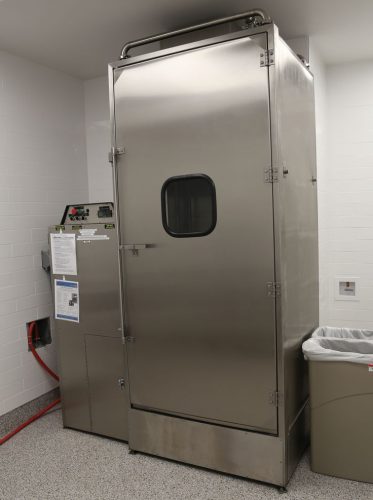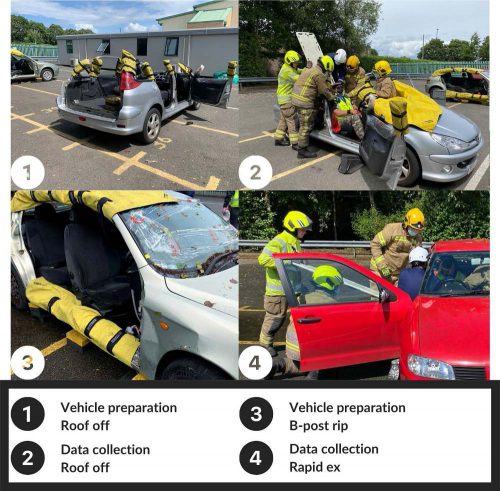Preparation and planning will get you just so far. But then, you actually have to act. There are four phases in this procedure. I’ll break them down one by one.
Patient preparation. The area should be shielded from curious onlookers and to control any airborne contaminants (dust, debris) at the scene. Portable monitors should be attached. Good IV/IO access needs to be in place, and the airway controlled via intubation. Adequate anesthesia, analgesia, and sedation must be provided. In addition to pain medication, broad-spectrum antibiotics should be considered, and tetanus toxoid given at some point.
Limb preparation. Expose the extremity, especially the entire area around the amputation site. Wash gross debris off with saline. Place a tourniquet at least 2 inches proximal to the amputation site so it does not interfere with the procedure. Do not tighten until ready to begin. Then prep with betadine or other antiseptic.
The amputation. If that has not been done, administer anesthesia, and tighten the tourniquet. Choose an amputation point as distal as practical to preserve as much future function as possible. Generally speaking, a guillotine amputation is performed; nothing fancy here. Use large blades on the skin, and have plenty of extra blades. It is likely that the blades will get dull quickly in the scene environment. Cut through muscles next, saving the neurovascular bundles until last. These tend to retract when cut, so it is recommended that they be tied first.
Identify the spot where the bone will be cut, and scrape away the periosteum with the scalpel blade. Use an appropriate saw to actually separate the bone. Battery-powered hand-held saws are convenient and reduce the work. However, they may not readily fit into the space available, so a flexible wire (Gigli) saw may be preferred.
Always ensure that someone has been assigned to monitor the patient during the procedure. They need to ensure that everyone is aware of any adverse change in vital signs so that proper adjustments can be made.
Once the amputation is complete, inspect for bleeding, clamping anything that is a problem. It may not be possible to suture and tie given space limitations, so leaving the clamps in place works just fine. Then apply a bulky and compressive dressing, and get out of the way so the EMS providers can do their thing.
The aftermath. Once the patient has been extricated, double check the patient’s ABCs. Make sure the airway is well-placed and secure, or provide one now. Ensure adequate ventilation, and double-check for any bleeding from the amputation site or anywhere else. Then get the patient to definitive care so the trauma team can get to work.
But wait, what about the amputated part? If possible, it should be “dry-packed” in ice (remember the old bag within a bag?) and sent with the patient or soon after. Have you ever wondered why we do that? There is no hope for reimplantation, even if the amputation went flawlessly. There is little real return of function for extremities amputated above the fingers/toes. However, we can use skin and soft tissue from the lost part to help reconstruct the lost limb.
Click this link for a bibliography for this series.



